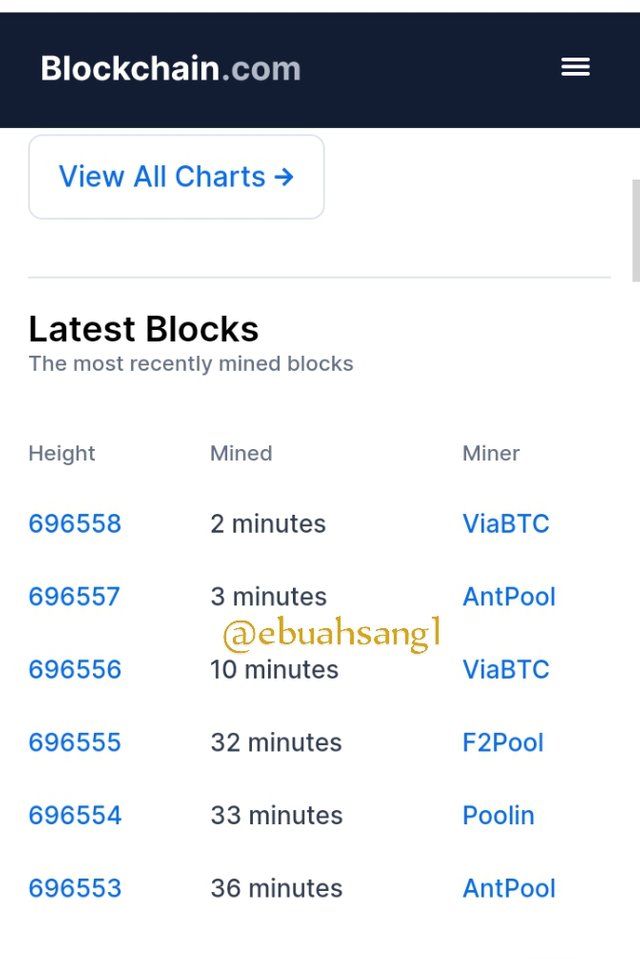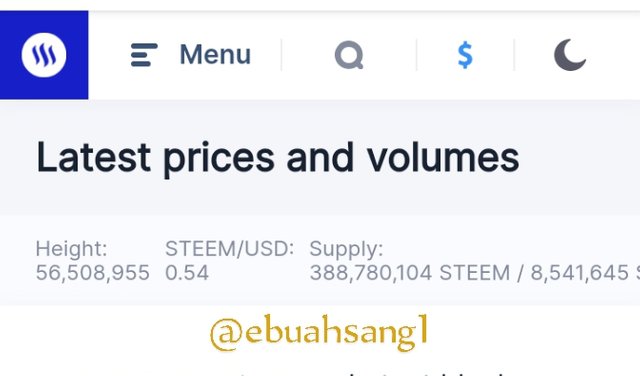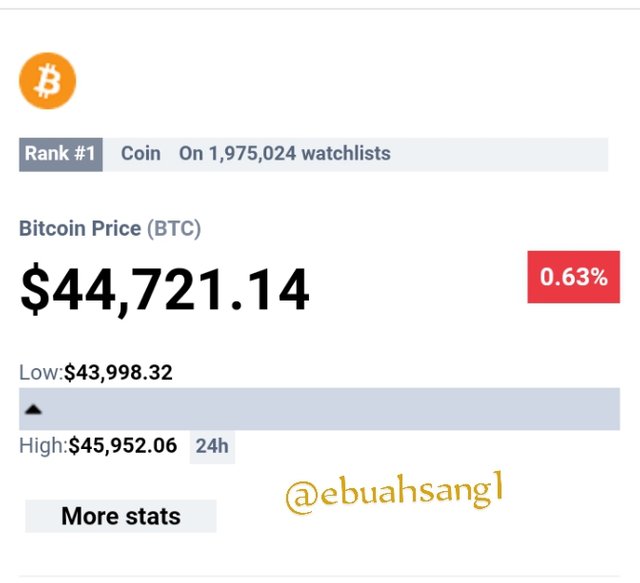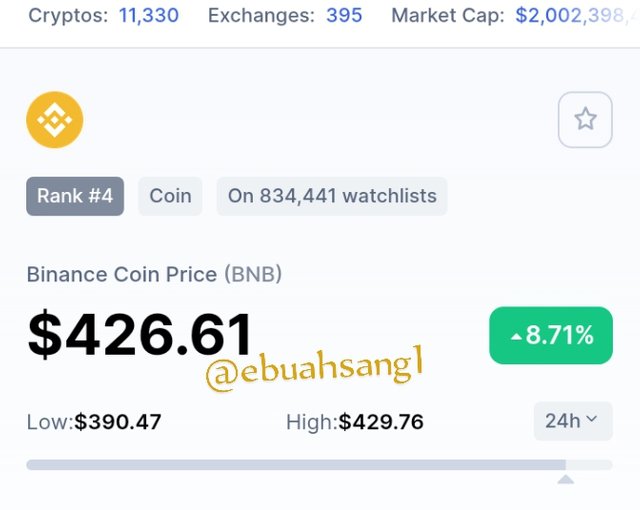Steemit Crypto Academy [Beginners' Level] | Season 3 Week 8 | Blockchain Rewards| Homework post for Professor @awesononso by @ebuahsang1

Pinterest, edited in Postermywall"
Question 1. In your words, explain mining and block reward.
Mining
Mining in natural terms refers to the process of digging the surface of the earth for precious minerals. That definition is not to far from that of the blockchain community as we regard Bitcoin and other crypto currencies to be precious.
So we can define mining in Blockchain terminology as the process of adding Bitcoin transaction data to a block by solving complex cryptographic problems. Bitcoin mining has become a very complex activity of late that human hands cannot perform and so, mining rely on sophisticated computer gadget to solve these complex problems.
Mining is not only the act of adding Bitcoin but also process by which miners use sophisticated computer gadget to solve complex cryptographic problems.
During mining, miners are tasked with the following;
- Stacking transaction up to the intended size of a block. The size of a regular block is 1mb while on SegWit it is 4mb.
- Verify the validity of transaction to avoid double spending, a situation by which coins are used twice.
- And last but not the least task is that miners need to show proof of work by discovering the right hash for the block. It's at this part that the speed of the miners machine is important. The faster the speed, the easier it is for miners to discover the right hash. Application-specific integrated circuit software is a very useful gadget for miners in this process.
Block Reward.
We can see from the explanation above that the process of adding transactions to a block is not an easy one. Ensuring that transactions are up to the size of the block, verifying that double spending doesn't occur and finding the right hash for the block. All this does not go without a reward to the miner who undertook this process.
When a miner successfully add a block to the ledger, the miner is rewarded with two things.
- New coins. The miner is rewarded with new minted coin.
- Transaction fee. The miner also receive part of the transaction fee of all transactions that are involved in the block.
Question 2. What do you understand by the Bitcoin Halving?
The value of money comes from the fact that it is relatively scarce and so does the value of Bitcoin. For anything to be valuable, it needs to be scares, that's why water which is a basic human commodity but is not scarce is not valuable in terms of money.
As we earlier explained, the process of mining sees miners rewarded with new coins daily. The continuous supply of coins leads to inflation but luckily enough, the rate of inflation of Bitcoin is not as much as that of fait Money. It is important for the supply of Bitcoin to be regulated. One of the ways in which Bitcoin supply is being regulated is called Bitcoin Halving
What is Bitcoin Halving.
Bitcoin halving as the name goes is a phenomenal by which the supply of Bitcoin through mining reduces by half every 210,000 blocks. That is to say, in order to reduce inflation of Bitcoin, the reward miners get for mining new coins reduce by half of the number gotten before every 210,000.
Bitcoin halving has only occurred 3 times since the creation of Bitcoin in 2009.
- In 2012 the number of BTC reduced from 50BTC received as rewards to 25 BTC.
- In 2016, the number reduced from 25BTC to 12.5BTC.
- In 2020, the number reduced from 12.5BTC to 6.25 BTC.
Looking at the year difference, it can be said that Bitcoin halving occurs every 4 years. From 2009 to 2012 is 4 years, 2012 - 2016 4 years, and 2016-2020 is 4 years.
Question 3. What are the effects of the Halving on miners?
Reduce inflation rate of Bitcoin.
Bitcoin halving is very essential in reducing the rate of inflation of Bitcoin.
It is important to note that in 2012, inflation rate of Bitcoin went as high as 50%. After the first halving in 2012, the rate reduced drastically to 12%, after the halving of 2016 it reduced to 5%, and now after the 2020 halving in may, it has reduced to 1.76%.
Bull run (Increase in Value).
A reduction in supply means an increase in the demand. In any Market scenario when demand is more than supply, price increases there by increasing the value. It is worth noting that every time there have been a Bitcoin halving, prices movement have experience a bull run due to the reduction in supply.
The first Bitcoin halving occured in 2012 when Bitcoin was $12, after the halving on November 28 the price increased to $1,207, in 2015 price were $647 and after the halving in 2016 the price soar to $19,345 in December 2017 and so on.
It is evidence that after every halving, prices experience a bull run.
Question 3. What is the current block height on the Bitcoin blockchain? How many more blocks before the next halving?(Screenshots and Full working)
As of the time of this post, the current height of Bitcoin blockchain is 696558. Check the screenshot below.

Screenshot from Blockchain.com"
We earlier said halving occurs every 210,000 and that a total of 3 halving have occured since the creation of Bitcoin. The next halving will be the fourth. So to the get the next block at which halving is going to occur, we will multiple 4 by 210,000.
That is
4th Halving = 210,000 x 4
= 840,000.
Now that we know the next block that the Bitcoin is going to occur, to calculate how many block before the next halving, we will subtract the present block height from the next halving block height.
That is 840,000- 696588 = 143,412
143,412 is the of blocks left before the next halving.
Question 4. Do you think Steem’s inflation rate reduction can affect other coins? Why?
No, I don't think Steem inflation rate reduction can affect other coins in the market.
Why.
For now I think the market dominance of Steem is very low. Steem is not yet a dominant coin in the crypto currency world and so it's influence in the market and on other currency is low. Unlike Bitcoin which has much influence on the price movement of altcoins.
So a reduction in the Steem inflation rate will not affect other coins.
Question 5. What is the current block height on the Steem blockchain? How many more blocks before the next 0.01% reduction?(Screenshots and Full working)
The present block height on the Steem blockchain as of the time of this post is 56,508,955.

The inflation reduction rate is 0.01% every 250,000 block.
Therefore, to get the number of reduction so far, we will divide the block height by 250,000.
That's 56,508,955/250,000=226.03.
So there have been 226 reductions so far.
To calculate the next block for reduction, we will multiply the next whole number by 250,000 the reduction block.
227 is the next block reduction number.
227 x 250,000= 56,750,000.
Therefore, the number of blocks before the next block reduction is
56,750,000-56,508,955 = 241,045.
So the remaining block before the next reduction is 241,045.
Question 1. What is the current value of BTC on the day you are performing this task? If you made a purchase of $2,500 then,
a.) how many satoshis would you have?
b.) what is the value of a satoshi for that day?
(Show full working and correct to 3 s.f)
(1 satoshi = 0.00000001 BTC)
What is the current value of BTC on the day you are performing this task?
The value of Bitcoin as at the time of this post is
44,721.14.

a. How many satoshis would you have?
If we made a purchase of $2500. The value of BTC will be calculated as follow.
To get the value of $2500 Bitcoin we will divide $2500 by the current price of BTC.
That's.
1BTC = 44,721.14
Let's say X is the value of BTC purchased.
So X BTC= 2,500/44,721.14
X BTC = 0.055901973876336
Approximately 0.0559 ( 3 s.f)
Number of Satoshi.
Let's say number of Satoshi = Z
The formula for Satoshi is
1satoshi = 0.00000001.
Remember we bought 0.055901973876336BTC, to get the number of Satoshi we will divide the number of BTC by value of Satoshi.
Z Satoshi = 0.055901973876336/0.00000001
= 5,590,197.387633678
There the number of Satoshi is 5,590,197.388 (3.s.f)
b. what is the value of a satoshi for that day?
The Value of Satoshi today.
If 1 BTC = 44,721.14
1Satoshi = 0.00000001
Value of Satoshi = 44.721.14 x 0.00000001
1 Satoshi = 0.0004472114.
Therefore, value of Satoshi today is 0.000447 (3.s.f)
Question 2. What is the current value of BNB on the day you are performing this task? If you made a purchase of $30 then,
a.) how many Jagers would you have?
b.) what is the value of a Jager for that day?
(Show full working and correct to 3 s.f)
(1 jager = 0.00000001 BNB) (Screenshots of current value should be provided)
What is the current value of BNB on the day you are performing this task?
The current value of BNB as of the time of this post is $426.61

a. how many Jagers would you have
If I purchased $30. Let's say the value of BNB is Y.
The value of BNB I have purchased Y will be;
Y = $30/426.61
Y = 0.070321839619324
The number of BNb I have purchased is 0.0703 (3.s.f)
It is important to remember that
1jager = 0.00000001BNB.
To get the number of Jager I have purchased, I will divide the BNB by 0.00000001. Let's say the number of Jager = J.
J = 0.070321839619324/0.00000001
J = 7,032,183.961932444
Therefore the number of Jager I have purchased is 7,032,183.962 (3.s.f)
b. what is the value of a Jager for that day?
1BNB = 426.61
1 Jager = 0.00000001
Value of Jager today = 426.61 x 0.00000001
= 0.0000042661
Therefore, the value of Jager today is 0.00000427 (3.s.f)
Conclusion.
Bitcoin mining is a very important aspect of the Blockchain technology. Verifying that transactions are correctly register on the ledger is not just important but very tedious. It is for this reason that Bitcoin rewards are important to reward the efforts of miners.
However, the increase supply of Bitcoin or other crypto currencies is a call for concern as it might increase inflation. Luckily enough the process of Halving where the reward miners get from mining a currency reduces by half. This is an important check against inflation.
I must confess, this is one of my best lessons so far. I always really enjoy your teaching professor @awesononso.
Thank you for the lesson
CC. Professor @awesononso.
Hello @ebuahsang1,
Thank you for taking interest in this class. Your grades are as follows:
Feedback and Suggestions
Very good job on the calculations.
Some of the explanations are paraphrased from the lesson. Always be as original as possible.

Thanks again as we anticipate your participation in the next class.
Thank you professor. I will note your corrections